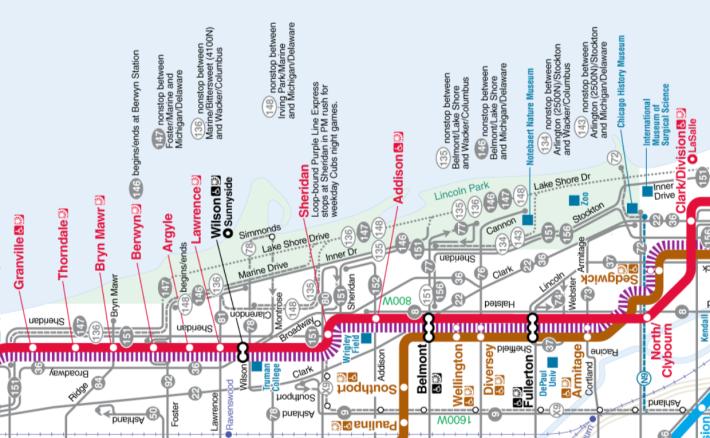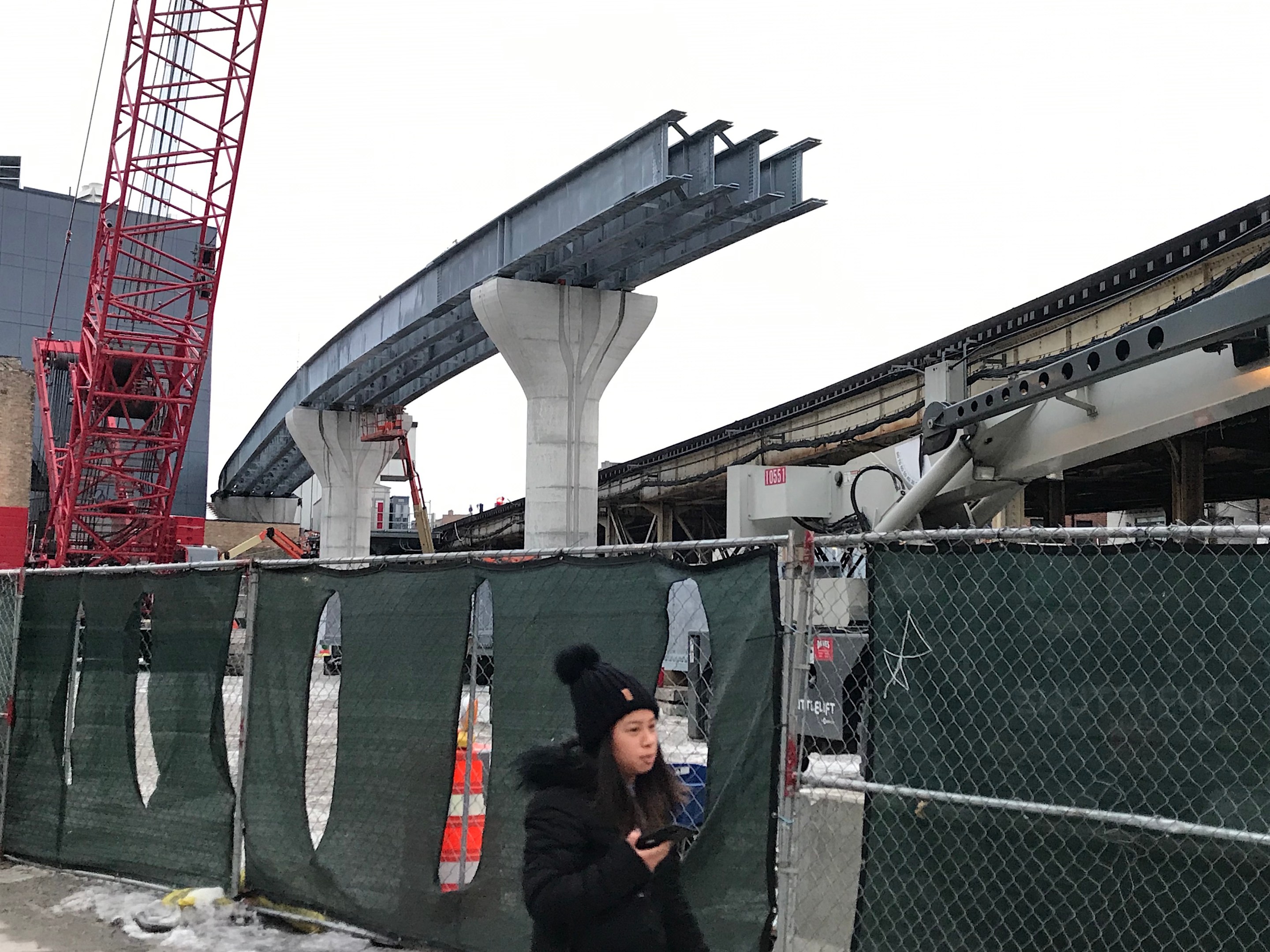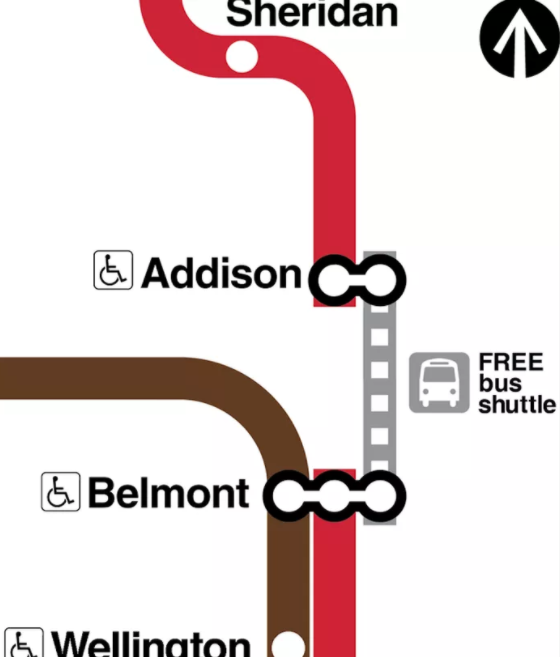It won't be too long until the CTA's Belmont Flyover, officially called the Red-Purple Bypass, will be unclogging the junction of the Red, Brown, and Purple lines in Lakeview as part of the massive Red and Purple Modernization project. The flyover work, which started in 2019, is scheduled to wrap up this year. It will be followed by the reconstruction of Red and Purple track structure between the Belmont stop and roughly Cornelia Avenue, a block north.
As a sign that things are getting real, today marks the start of two weekend service disruptions on the Red Line between Belmont and Addison so that contractors can install structural supports for the flyover, which will serve northbound Brown trains. Here's the timeframe for the shutdowns:
- Friday, Jan. 8 starting at 10 p.m. to Monday, Jan. 11 at 4 a.m.
- Friday, Jan. 15, starting at 10 p.m. to Monday, Jan. 18 at 4 a.m.
During the service disruptions, the CTA will offer free bus shuttles between the Addison and Belmont stations. Of course, getting off a train, going downstairs to street level, catching a bus for four blocks, entering another station, going upstairs to the platform, and catching another train, will be rather time consuming.
So depending on where and how far you're traveling off, you might be better off taking one of the CTA bus routes that roughly parallel the Red Line, such as the Clark Street, Halsted Street, Broadway, and Lake Shore Drive lines, instead of dealing with the above transfer.

RPM project contractor Walsh-Fluor will be doing the following work:
- Placing the straddle bent that connects the columns on either side of the Belmont Flyover tracks
- Installing steel girders that form the backbone of the Red-Purple Bypass
In addition to the flyover, Phase One of RPM also includes rebuilding the century-old rail structure between the Lawrence and Bryn Mawr stations and rebuilding four stations on that stretch to make them wheelchair accessible. This work is expected to start this year.
The CTA says the Belmont Flyover will improve reliability on the three lines, improve speeds, reduce crowding, allow the agency to run more trains during rush hours. The bypass replaces the Belmont rail junction, which was built in 1907 and carried about 150,000 rides each weekday prior to the COVID-19 pandemic, when the transit system has seen a massive ridership drop.





